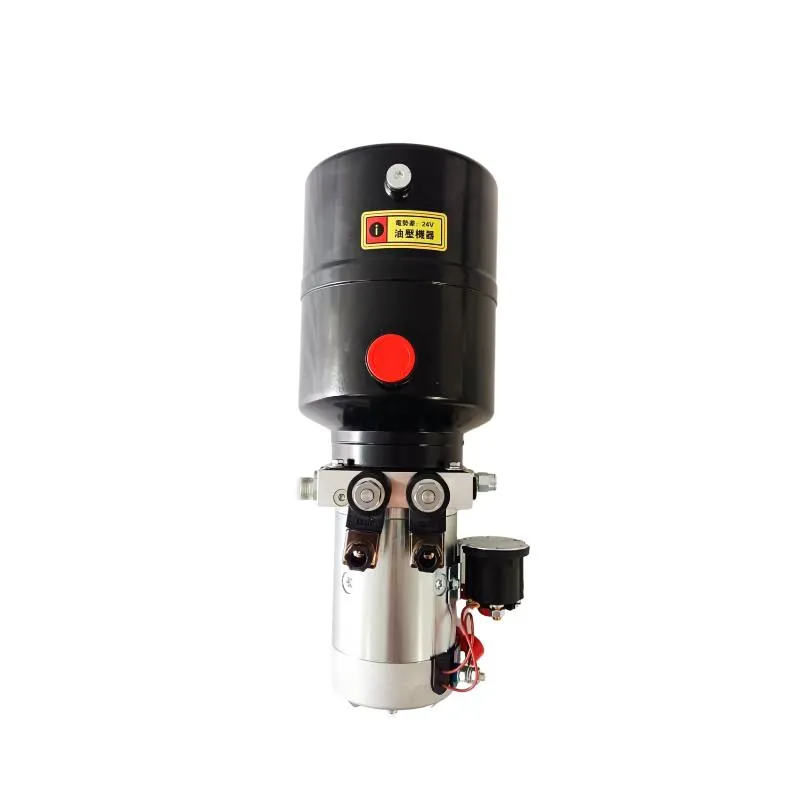Ago . 06, 2024 14:06 Back to list
Exploring Innovative Micro Hydraulic Cylinder Solutions for Enhanced Performance and Efficiency in Compact Applications
Understanding Micro Hydraulic Cylinder Products
Micro hydraulic cylinders are specialized hydraulic components designed for applications requiring small, precise movements with high power density. These cylinders are essential in various industries, including medical devices, robotics, aerospace, and automation systems, where space is often limited, but performance is critical.
What Are Micro Hydraulic Cylinders?
Micro hydraulic cylinders function similarly to standard hydraulic cylinders but are scaled down to fit compact spaces. They utilize hydraulic fluid to create force and movement through the application of pressure. The design of these cylinders enables them to produce substantial thrust in a miniature form, making them ideal for applications where traditional hydraulic systems can’t fit.
Key Features of Micro Hydraulic Cylinders
1. Compact Size As the name suggests, micro hydraulic cylinders are significantly smaller than their standard counterparts. This compactness allows for easy integration into intricate systems without sacrificing performance. They can be as small as a few millimeters in diameter, making them perfect for precision applications.
2. High Power Density Despite their small size, micro hydraulic cylinders are capable of generating considerable force. This high power density is achieved through advanced engineering and design, making them invaluable in scenarios where power-to-weight ratio is essential.
3. Precision Control These cylinders allow for great precision in movement and positioning. The hydraulic fluid's ability to be controlled meticulously enables applications that require delicate operations, such as in robotic arms or automated manufacturing.
4. Durability and Reliability Micro hydraulic cylinders are engineered to withstand high pressures and frequent use, making them durable and reliable in demanding environments. Materials used in their construction are often corrosion-resistant, enhancing longevity and performance.
Applications of Micro Hydraulic Cylinders
The versatility of micro hydraulic cylinders opens up numerous application possibilities
micro hydraulic cylinder products

- Medical Devices In the medical field, these cylinders can be found in devices such as surgical robots, dental chairs, and other equipment requiring precise movement. Their compact size is particularly advantageous in portable surgical tools where space is a significant constraint.
- Robotics In robotics, micro hydraulic cylinders facilitate smooth and controlled movements in robotic arms, allowing them to perform delicate tasks such as assembling electronics or performing intricate surgery.
- Aerospace The aerospace industry leverages micro hydraulic cylinders in various applications, including landing gear mechanisms, control surfaces, and other systems where weight savings and reliability are crucial.
- Automation Systems Many automated systems employ micro hydraulic cylinders to achieve quick and precise motions in production lines, enhancing efficiency and productivity.
Advantages of Using Micro Hydraulic Cylinders
The adoption of micro hydraulic cylinders in various industries provides several advantages
- Space Efficiency Their compact design allows for greater design flexibility and the ability to optimize the use of available space in machinery and devices.
- Increased Productivity The high power-to-size ratio enables faster movements and operations, ultimately improving overall productivity in manufacturing and automation settings.
- Cost-Effectiveness While the initial investment might be higher, the efficiency and precision gained can lead to significant savings in labor and material costs in the long run.
Conclusion
Micro hydraulic cylinders are revolutionizing the way industries approach small-scale operations that require high precision and efficiency. Their unique combination of size, power, and versatility makes them an essential component in numerous applications across various sectors. As technology advances and the demand for compact yet powerful solutions continues to rise, micro hydraulic cylinders will undoubtedly play a pivotal role in shaping the future of engineering and automation.
-
1.5 Ton Flipping Oil Cylinder 70/82-40-217-720-Hebei Shenghan Hydraulic Machinery|Precision Hydraulic Cylinder,Custom Hydraulic Solutions
NewsAug.29,2025
-
1.5 Ton Flipping Oil Cylinder 70/82-40-217-720 | Hebei Shenghan Hydraulic Machinery Co., Ltd.
NewsAug.29,2025
-
High-Precision [90/105-50-180-480] Industrial Component | Durable & Reliable
NewsAug.27,2025
-
High-Performance Set of 50/60-45-290 471 | Durable & Reliable Components
NewsAug.26,2025
-
Efficient Pallet Truck Power Units - Reliable Hydraulic Systems
NewsAug.25,2025
-
Premium Set of 50/60-45-290 471 Parts | High Performance
NewsAug.24,2025
